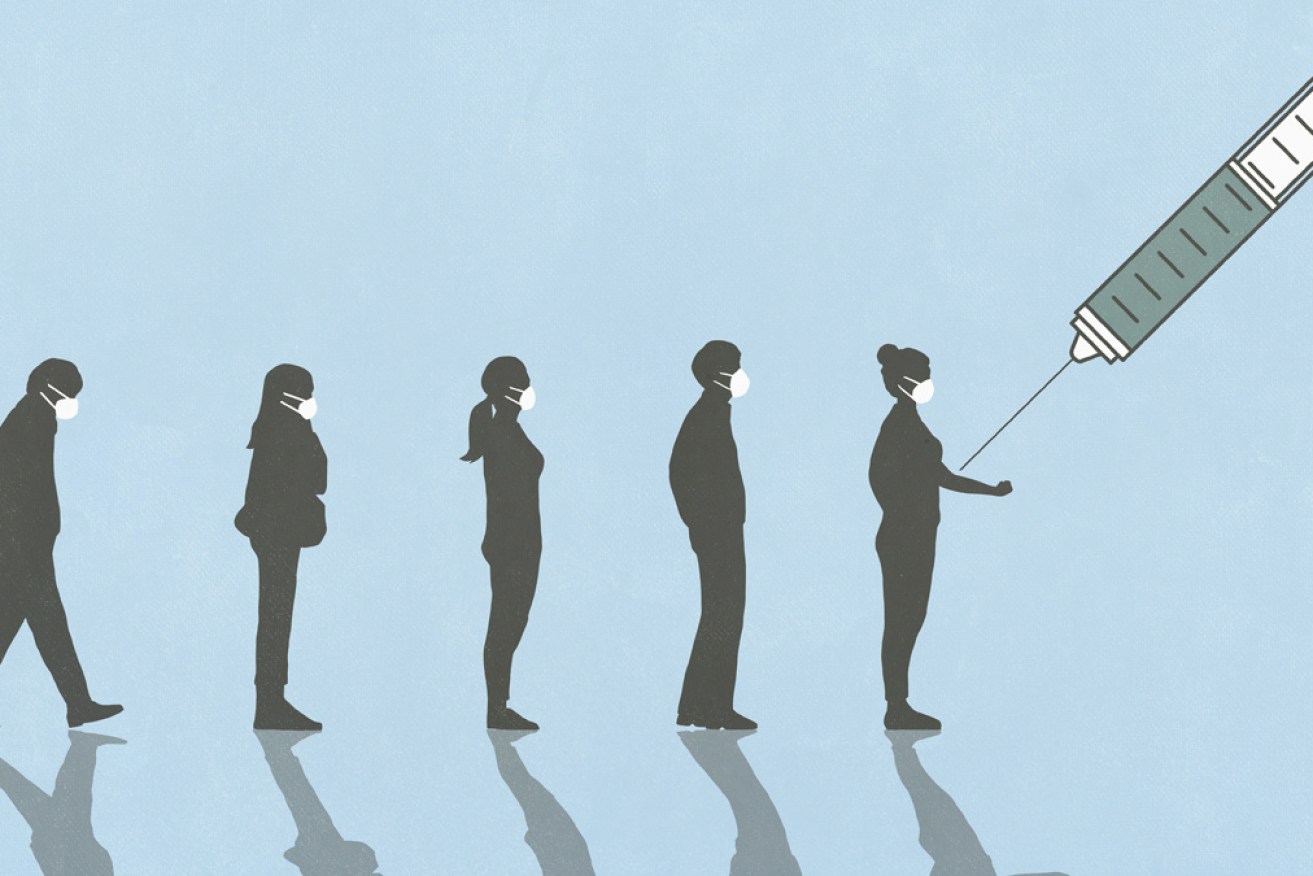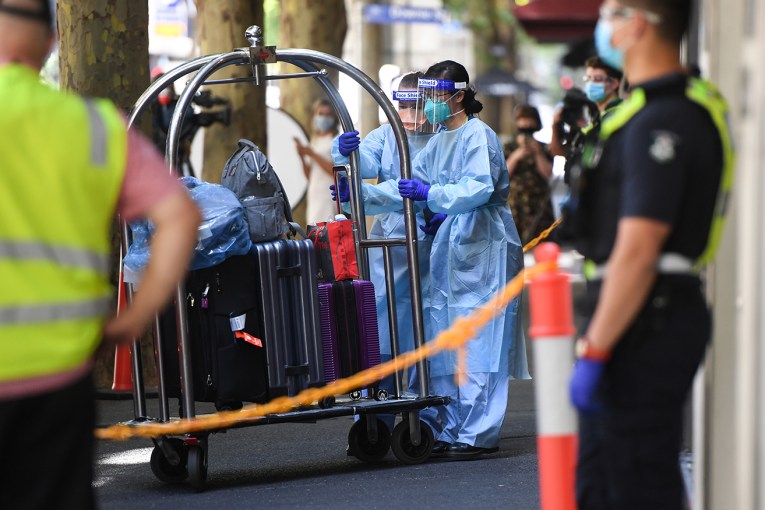It’s not ‘anti-vaxxers’ we need to worry about, it’s ‘later-vaxxers’

Australians who are eligible for the COVID vaccine – but who are dawdling in getting it – are a threat to our rollout goals. Photo: Getty
Anti-vaxxers have commanded public attention since Australia’s COVID vaccine rollout began.
It is difficult to discuss the ‘magic number’ of vaccines we need to escape lockdowns and open our borders without confronting a nagging question: Won’t the anti-vaxxers get in the way?
The fixation on those who refuse to be vaccinated is understandable, especially when they are firmly in the public eye after joining thousands of anti-lockdown protesters in Sydney and Melbourne.
But it is an unnecessary fixation. Anti-vaxxers are a loud minority, but they are a very small minority.
A poll by Essential Report has asked the same question 10 times over the course of a year: Once a vaccine becomes available to you, how long would you wait before getting it?
The proportion who say they would never get vaccinated has remained relatively steady and was only 11 per cent when the question was last asked in July.
And the group of self-identified ‘anti-vaxxers’ could be even smaller, with another survey showing it could be as low as 5 per cent.
Later-vaxxers lax on rushing to COVID vaccines
Most Australians want to do the right thing.
The Essential poll found that about 90 per cent of adult Australians say they want to get vaccinated.
In our new report, we show that Australia only needs 80 per cent of its population to be fully vaccinated before it can relax its stance on containing COVID without risking overwhelming the health system.
That means anti-vaxxers are not a roadblock to getting back to normal.
The challenge instead is to convince a different group of people – the 27 per cent of Australians from the same Essential poll who said they would get vaccinated, but not straight away.
The later-vaxxers.
Shifting this ‘moveable middle’ should be the focus of the government’s vaccine strategy. The government has not made a good start.
Poor messaging around AstraZeneca was damaging – another survey in June found that half of those over 55 who were willing to get vaccinated, but had not been yet, were waiting for Pfizer to become available.
The same mistake cannot be made with Pfizer.
The government must ensure trust and confidence in vaccination. A better communications strategy should tackle the main reasons for hesitation.
The most cited concern about vaccination is about the safety of vaccines, so governments need to provide clear and consistent messaging about what the vaccines do, and why they are beneficial.
Make access easy
A survey by the Melbourne Institute showed that half of those who said they would be unwilling or unsure about getting vaccinated would be
persuaded if they were given more information on the effectiveness of vaccines.
A national campaign should also include targeted messages for different demographics, including younger people, older people and people from culturally and linguistically diverse backgrounds.
The messenger matters, so the government should engage credible spokespeople, including respected community figures.
And there should be no barriers for uptake.
In June, 23 per cent of unvaccinated adults said they didn’t know where to get a COVID vaccination.
State governments can help if they are given enough supply, by bringing shots to people in shopping centres, sporting venues, community and religious centres, workplaces and schools.
Governments could provide vouchers for transport to vaccination sites, establish 24-hour vaccination blitzes, and even have mobile and home-visit vaccination programs.
Governments should be ambitious and creative.
Vaccine supply is rapidly ramping up, and from October it should no longer be a constraint. We could plausibly reach 80 per cent fully vaccinated by the end of the year, or shortly thereafter if a vaccine is not approved for children under 12.
Getting there would require an enormous logistical improvement. But it is the government’s job to get those logistics right, and it is not like they haven’t had time to prepare, and learn from mistakes made to date.
Once vaccines are readily available to everyone, the deciding factor for whether we quickly get to 80 per cent of Australians fully vaccinated will not be whether anit-vaxxers will change their minds; it will be whether those sitting on the fence about vaccination can be convinced.
Given that the only alternatives – risking a health calamity on the one hand, or an indefinite stint walled inside Fortress Australia on the other hand – are unacceptable, failure is not an option.
Tom Crowley and Anika Stobart are associates at Grattan Institute








